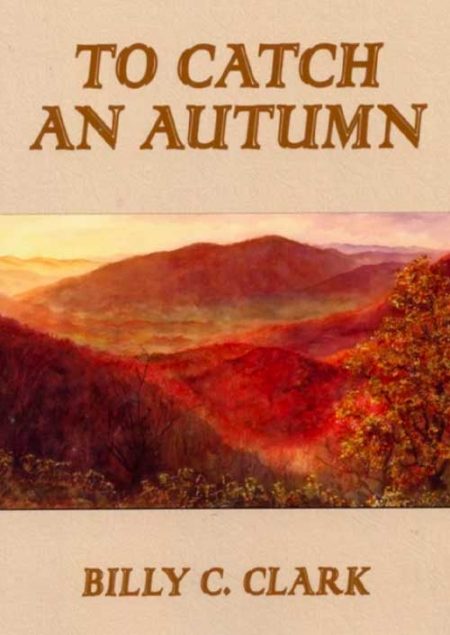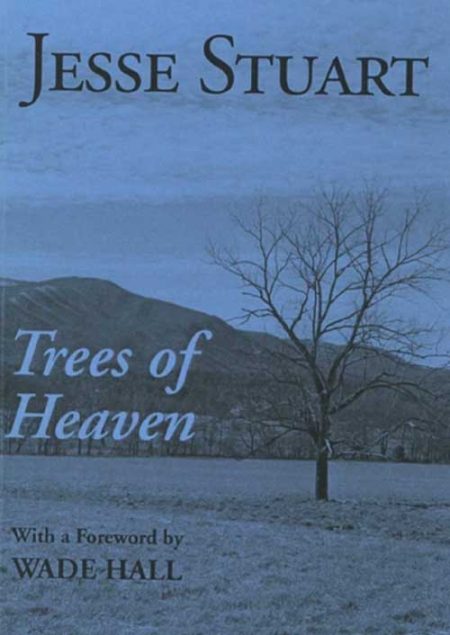-
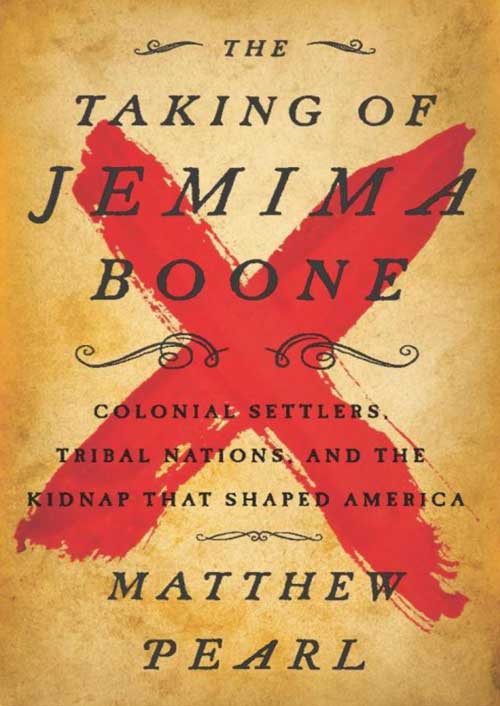 In his first work of narrative nonfiction, Matthew Pearl, bestselling author of acclaimed novel The Dante Club, explores the little-known true story of the kidnapping of legendary pioneer Daniel Boone’s daughter and the dramatic aftermath that rippled across the nation. On a quiet midsummer day in 1776, weeks after the signing of the Declaration of Independence, thirteen-year-old Jemima Boone and her friends Betsy and Fanny Callaway disappear near the Kentucky settlement of Boonesboro, the echoes of their faraway screams lingering on the air. A Cherokee-Shawnee raiding party has taken the girls as the latest salvo in the blood feud between American Indians and the colonial settlers who have decimated native lands and resources. Hanging Maw, the raiders’ leader, recognizes one of the captives as Jemima Boone, daughter of Kentucky's most influential pioneers, and realizes she could be a valuable pawn in the battle to drive the colonists out of the contested Kentucky territory for good. With Daniel Boone and his posse in pursuit, Hanging Maw devises a plan that could ultimately bring greater peace both to the tribes and the colonists. But after the girls find clever ways to create a trail of clues, the raiding party is ambushed by Boone and the rescuers in a battle with reverberations that nobody could predict. As Matthew Pearl reveals, the exciting story of Jemima Boone’s kidnapping vividly illuminates the early days of America’s westward expansion, and the violent and tragic clashes across cultural lines that ensue. In this enthralling narrative in the tradition of Candice Millard and David Grann, Matthew Pearl unearths a forgotten and dramatic series of events from early in the Revolutionary War that opens a window into America’s transition from colony to nation, with the heavy moral costs incurred amid shocking new alliances and betrayals.. HARDBACK VERSION Matthew Pearl
In his first work of narrative nonfiction, Matthew Pearl, bestselling author of acclaimed novel The Dante Club, explores the little-known true story of the kidnapping of legendary pioneer Daniel Boone’s daughter and the dramatic aftermath that rippled across the nation. On a quiet midsummer day in 1776, weeks after the signing of the Declaration of Independence, thirteen-year-old Jemima Boone and her friends Betsy and Fanny Callaway disappear near the Kentucky settlement of Boonesboro, the echoes of their faraway screams lingering on the air. A Cherokee-Shawnee raiding party has taken the girls as the latest salvo in the blood feud between American Indians and the colonial settlers who have decimated native lands and resources. Hanging Maw, the raiders’ leader, recognizes one of the captives as Jemima Boone, daughter of Kentucky's most influential pioneers, and realizes she could be a valuable pawn in the battle to drive the colonists out of the contested Kentucky territory for good. With Daniel Boone and his posse in pursuit, Hanging Maw devises a plan that could ultimately bring greater peace both to the tribes and the colonists. But after the girls find clever ways to create a trail of clues, the raiding party is ambushed by Boone and the rescuers in a battle with reverberations that nobody could predict. As Matthew Pearl reveals, the exciting story of Jemima Boone’s kidnapping vividly illuminates the early days of America’s westward expansion, and the violent and tragic clashes across cultural lines that ensue. In this enthralling narrative in the tradition of Candice Millard and David Grann, Matthew Pearl unearths a forgotten and dramatic series of events from early in the Revolutionary War that opens a window into America’s transition from colony to nation, with the heavy moral costs incurred amid shocking new alliances and betrayals.. HARDBACK VERSION Matthew Pearl -
Out of stock
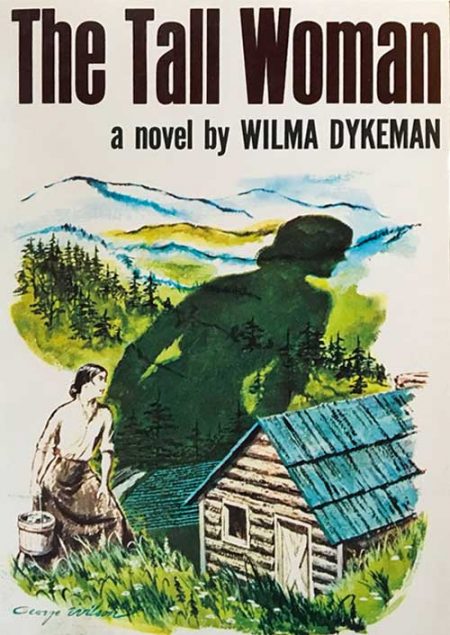 Lydia Moore grew up in the Appalachian region before the Civil War and married Mark McQueen shortly after it began. Her husband went off to fight for the Union while her father and brother fought for the Confederates. While the men were gone, outliers raided Lydia's mother's home, assaulting her and stealing the livestock. SOFTBACK VERSION By Wilma Dykeman
Lydia Moore grew up in the Appalachian region before the Civil War and married Mark McQueen shortly after it began. Her husband went off to fight for the Union while her father and brother fought for the Confederates. While the men were gone, outliers raided Lydia's mother's home, assaulting her and stealing the livestock. SOFTBACK VERSION By Wilma Dykeman -
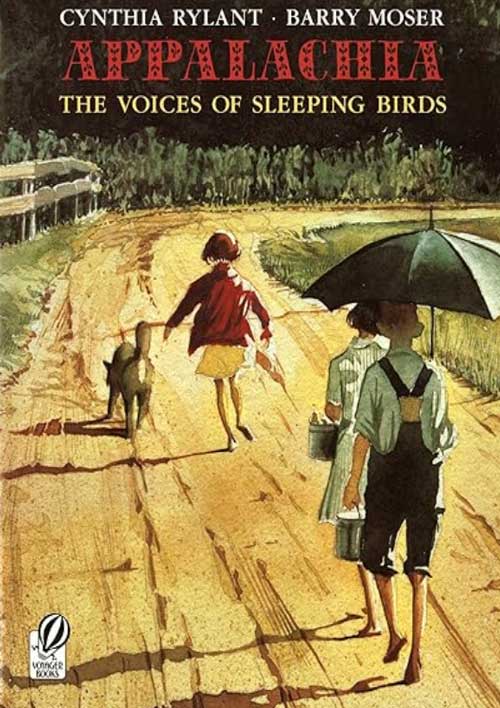 Lyrical prose and warm watercolor illustrations bring a "certain part of the country called Appalachia" alive for young readers. Two award-winning artists, forever touched by their experiences growing up in this unique landscape, have teamed to create a quietly powerful and beautifully crafted portrait of life in a timeless place. SOFTBACK VERSION By Cynthia Rylant
Lyrical prose and warm watercolor illustrations bring a "certain part of the country called Appalachia" alive for young readers. Two award-winning artists, forever touched by their experiences growing up in this unique landscape, have teamed to create a quietly powerful and beautifully crafted portrait of life in a timeless place. SOFTBACK VERSION By Cynthia Rylant -
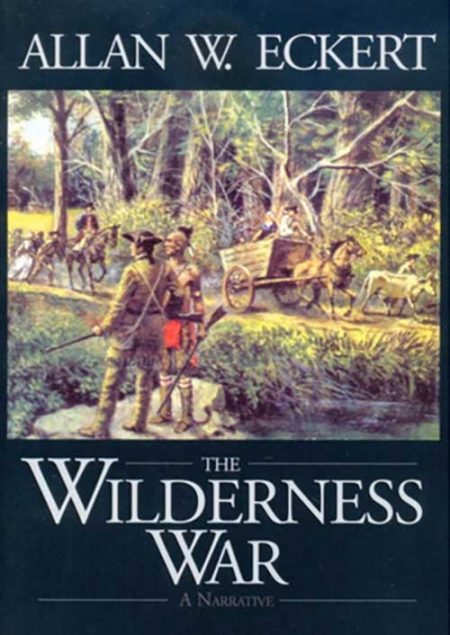 The Winning of America Series: Book 4 of 6 From Niagara Falls to Lake Champlain, the warriors of the mighty Iroquois ruled supreme. Not even the savagery of the French and Indian wars could cool their fury or halt their power. But by 1770 the restless white men were warring once again. Thayendanegea, the valiant Iroquois war chief, allied his fierce tribes with the one white man the Indians loved and trusted, Sir William Johnson. Once more the frontier would erupt, pitting the Indians' unvanquished spirit against the white setters' relentless challenge. Allan W. Eckert's Narratives of America are true sagas of the brave men and courageous women who won our land. Every character and event in this sweeping series is drawn from actual history and woven into the vast and powerful epic that was America's westward expansion. Allan W. Eckert has made America's heritage an authentic, exciting, and powerful reading experience. SOFTBACK & HARDBACK By Allan Eckert
The Winning of America Series: Book 4 of 6 From Niagara Falls to Lake Champlain, the warriors of the mighty Iroquois ruled supreme. Not even the savagery of the French and Indian wars could cool their fury or halt their power. But by 1770 the restless white men were warring once again. Thayendanegea, the valiant Iroquois war chief, allied his fierce tribes with the one white man the Indians loved and trusted, Sir William Johnson. Once more the frontier would erupt, pitting the Indians' unvanquished spirit against the white setters' relentless challenge. Allan W. Eckert's Narratives of America are true sagas of the brave men and courageous women who won our land. Every character and event in this sweeping series is drawn from actual history and woven into the vast and powerful epic that was America's westward expansion. Allan W. Eckert has made America's heritage an authentic, exciting, and powerful reading experience. SOFTBACK & HARDBACK By Allan Eckert -
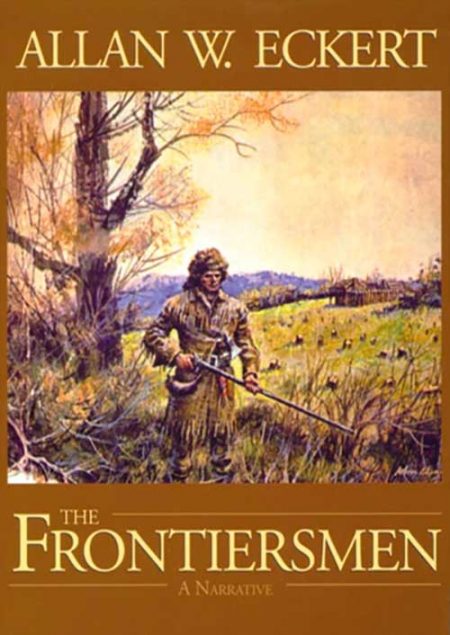
 Eckert published six novels in his The Winning of America series that include accounts of frontiersmen and notable Native Americans. He conducted extensive research for his works — and inserted fictional dialogue for his historical figures. The series includes the six books below and is a perennial JSF best seller:
Eckert published six novels in his The Winning of America series that include accounts of frontiersmen and notable Native Americans. He conducted extensive research for his works — and inserted fictional dialogue for his historical figures. The series includes the six books below and is a perennial JSF best seller:- The Frontiersmen
- Wilderness Empire
- The Conquerors
- The Wilderness War
- The Gateway to Empire
- The Twilight of Empire
-
 When the Japanese attacked Pearl Harbor in December 1941, Cornelia Fort was already in the air. At twenty-two, Fort had escaped Nashville’s debutante scene for a fresh start as a flight instructor in Hawaii. She and her student were in the middle of their lesson when the bombs began to fall, and they barely made it back to ground that morning. Still, when the U.S. Army Air Forces put out a call for women pilots to aid the war effort, Fort was one of the first to respond. She became one of just over 1,100 women from across the nation to make it through the Army’s rigorous selection process and earn her silver wings. SOFTBACK VERSION By Katherine Sharp Landeck
When the Japanese attacked Pearl Harbor in December 1941, Cornelia Fort was already in the air. At twenty-two, Fort had escaped Nashville’s debutante scene for a fresh start as a flight instructor in Hawaii. She and her student were in the middle of their lesson when the bombs began to fall, and they barely made it back to ground that morning. Still, when the U.S. Army Air Forces put out a call for women pilots to aid the war effort, Fort was one of the first to respond. She became one of just over 1,100 women from across the nation to make it through the Army’s rigorous selection process and earn her silver wings. SOFTBACK VERSION By Katherine Sharp Landeck -
 This is the journal Jesse Stuart kept following his near fatal heart attack in 1955. It was a time of his severest trial yet greatest fulfillment which began in an oxygen tent and ended with his happy return to a full and vigorous life. Here are the innermost feelings and moods of a man whose heart may give out at any moment, the new respect and even love that he develops for his heart, his thoughts about God, life, land, and home. By Jesse Stuart
This is the journal Jesse Stuart kept following his near fatal heart attack in 1955. It was a time of his severest trial yet greatest fulfillment which began in an oxygen tent and ended with his happy return to a full and vigorous life. Here are the innermost feelings and moods of a man whose heart may give out at any moment, the new respect and even love that he develops for his heart, his thoughts about God, life, land, and home. By Jesse Stuart -
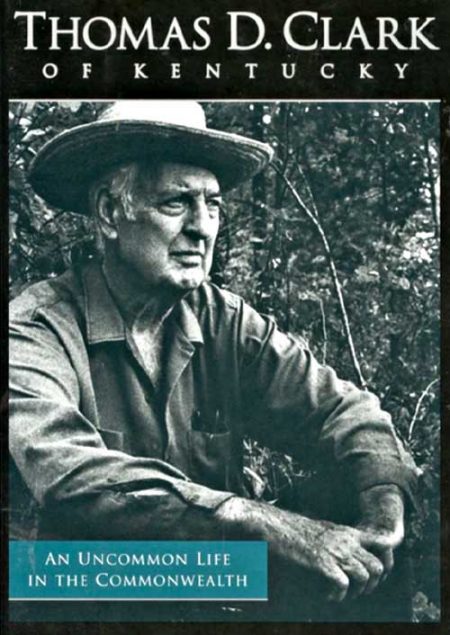 In 1990, the Kentucky General Assembly honored Thomas D. Clark by declaring him Kentucky’s Historian Laureate for life, at which time Governor Brereton Jones described him as “Kentucky’s greatest treasure.” Thomas D. Clark of Kentucky; An Uncommon Life in the Commonwealth is a celebration and exploration of the unparalleled life and career of a man who has both recorded the history and shaped the future of his adopted home state. Born on July 14th 1903, in Louisville, Mississippi, to a cotton farmer and a public school teacher, Clark was the oldest of seven children. Before enrolling in high school at age eighteen, he worked on a farm, in a sawmill, and as a cabin boy and deck hand on a dredge boat. After attending the University of Mississippi and earning graduate degrees at the University of Kentucky and Duke University, Clark joined the faculty of the University of Kentucky in 1931. There he chaired the history department from 1942 until 1965, influencing the lives of thousands of students.
In 1990, the Kentucky General Assembly honored Thomas D. Clark by declaring him Kentucky’s Historian Laureate for life, at which time Governor Brereton Jones described him as “Kentucky’s greatest treasure.” Thomas D. Clark of Kentucky; An Uncommon Life in the Commonwealth is a celebration and exploration of the unparalleled life and career of a man who has both recorded the history and shaped the future of his adopted home state. Born on July 14th 1903, in Louisville, Mississippi, to a cotton farmer and a public school teacher, Clark was the oldest of seven children. Before enrolling in high school at age eighteen, he worked on a farm, in a sawmill, and as a cabin boy and deck hand on a dredge boat. After attending the University of Mississippi and earning graduate degrees at the University of Kentucky and Duke University, Clark joined the faculty of the University of Kentucky in 1931. There he chaired the history department from 1942 until 1965, influencing the lives of thousands of students. -
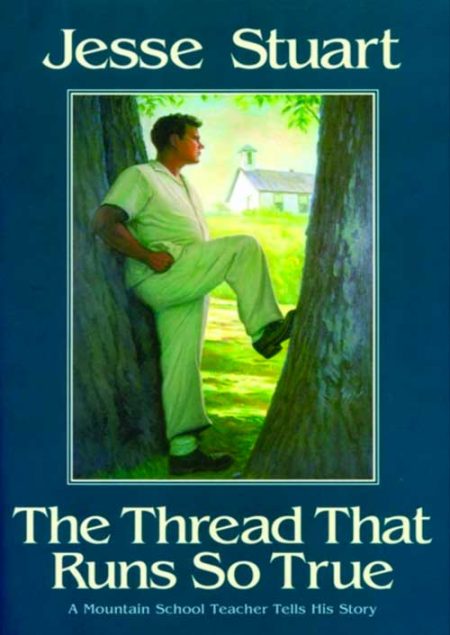 First published in 1949, Jesse Stuart's now classic personal account of his twenty years of teaching in the mountain region of Kentucky has enchanted and inspired generations of students and teachers. With eloquence and wit, Stuart traces his twenty-year career in education, which began, when he was only seventeen years old, with teaching grades one through eight in a one-room schoolhouse. Before long Stuart was on a path that made him principal and finally superintendent of city and county schools. The road was not smooth, however, and Stuart faced many challenges, from students who were considerably older — and bigger — than he to well-meaning but distrustful parents, uncooperative administrators and, most daunting, his own fear of failure. Through it all, Stuart never lost his abiding faith in the power of education. A graceful ode to what he considered the greatest profession there is, Jesse Stuart's The Thread That Runs So True is timeless proof that "good teaching is forever and the teacher is immortal." By Jesse Stuart
First published in 1949, Jesse Stuart's now classic personal account of his twenty years of teaching in the mountain region of Kentucky has enchanted and inspired generations of students and teachers. With eloquence and wit, Stuart traces his twenty-year career in education, which began, when he was only seventeen years old, with teaching grades one through eight in a one-room schoolhouse. Before long Stuart was on a path that made him principal and finally superintendent of city and county schools. The road was not smooth, however, and Stuart faced many challenges, from students who were considerably older — and bigger — than he to well-meaning but distrustful parents, uncooperative administrators and, most daunting, his own fear of failure. Through it all, Stuart never lost his abiding faith in the power of education. A graceful ode to what he considered the greatest profession there is, Jesse Stuart's The Thread That Runs So True is timeless proof that "good teaching is forever and the teacher is immortal." By Jesse Stuart -
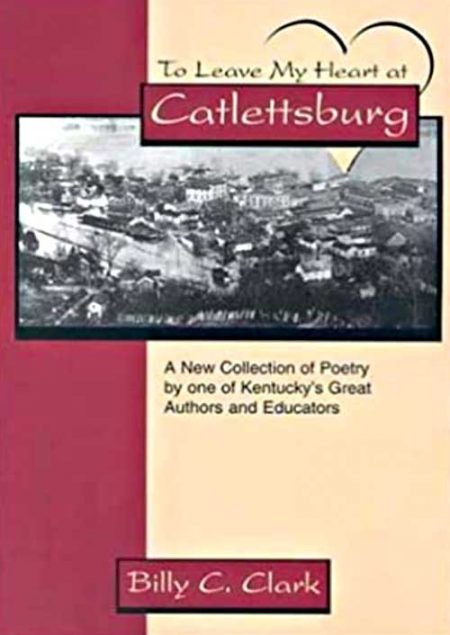 This sense of appreciation for earth and its creatures runs through all of the poems in To Leave My Heart at Catlettsburg and results in a poignant literacy tribute, a gift to a town and its people. Beyond that, this book reminds all readers to observe the world more carefully and to listen more sensitively, to be more alive to the beauty and sturggles around us, to be more grateful for passing through. By Billy C. Clark
This sense of appreciation for earth and its creatures runs through all of the poems in To Leave My Heart at Catlettsburg and results in a poignant literacy tribute, a gift to a town and its people. Beyond that, this book reminds all readers to observe the world more carefully and to listen more sensitively, to be more alive to the beauty and sturggles around us, to be more grateful for passing through. By Billy C. Clark -
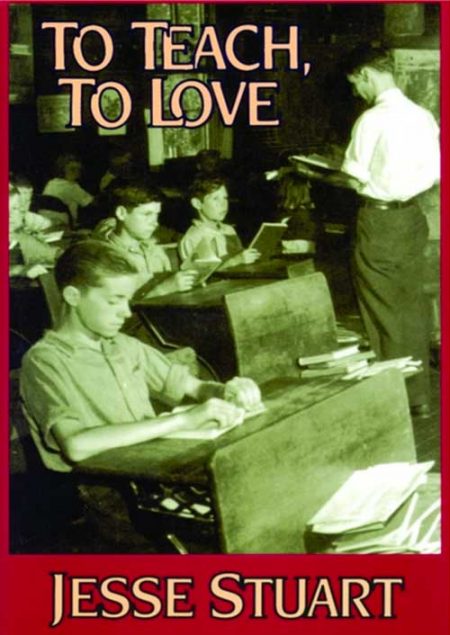 Stuart's autobiographical account of much of his educational career. This great Kentucky novelist, short story writer, poet, and teacher writes about his boyhood, his elementary school and high school experiences, and his days at Lincoln Memorial University. He tells of teaching in a one room rural schoolhouse, his experiences as a county school superintendent, and his stay as a teacher at American University in Cairo, Egypt. He explains what classroom methods worked best, and why, and speculates on what has gone wrong with American schools. By Jesse Stuart
Stuart's autobiographical account of much of his educational career. This great Kentucky novelist, short story writer, poet, and teacher writes about his boyhood, his elementary school and high school experiences, and his days at Lincoln Memorial University. He tells of teaching in a one room rural schoolhouse, his experiences as a county school superintendent, and his stay as a teacher at American University in Cairo, Egypt. He explains what classroom methods worked best, and why, and speculates on what has gone wrong with American schools. By Jesse Stuart -
 Traveling The Underground Railroad: A Visitor's Guide to More Than 300 Sites describes current private homes, churches, restaurants, and halls in the United States and Canada that once served as Underground Railroad sites, and includes contact information for tourism offices and historical societies. SOFTBACK VERSION By Bruce Chadwick
Traveling The Underground Railroad: A Visitor's Guide to More Than 300 Sites describes current private homes, churches, restaurants, and halls in the United States and Canada that once served as Underground Railroad sites, and includes contact information for tourism offices and historical societies. SOFTBACK VERSION By Bruce Chadwick -
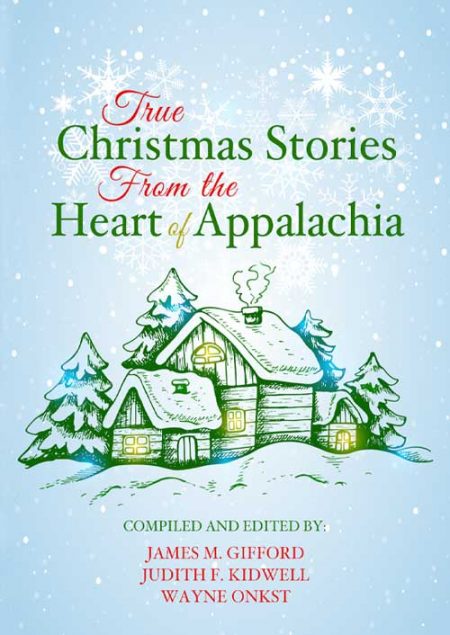 This book captures the spirit of Christmas in 43 true stories by 39 authors. Thirty-five of the stories are set in Kentucky and the others are from neighboring states. All of these powerful and well-written stories emanate from the heart of Appalachia, and many attach themselves to your heart. This is a great Christmas gift book! SOFTBACK VERSION FULL COLOR INTERIOR
This book captures the spirit of Christmas in 43 true stories by 39 authors. Thirty-five of the stories are set in Kentucky and the others are from neighboring states. All of these powerful and well-written stories emanate from the heart of Appalachia, and many attach themselves to your heart. This is a great Christmas gift book! SOFTBACK VERSION FULL COLOR INTERIOR -
Sale!
 This book captures the spirit of Christmas in 43 true stories by 39 authors. Thirty-five of the stories are set in Kentucky and the others are from neighboring states. All of these powerful and well-written stories emanate from the heart of Appalachia, and many attach themselves to your heart. This is a great Christmas gift book! SOFTBACK VERSION FULL COLOR INTERIOR (You will receive 5 copies of this book for the price of 4)
This book captures the spirit of Christmas in 43 true stories by 39 authors. Thirty-five of the stories are set in Kentucky and the others are from neighboring states. All of these powerful and well-written stories emanate from the heart of Appalachia, and many attach themselves to your heart. This is a great Christmas gift book! SOFTBACK VERSION FULL COLOR INTERIOR (You will receive 5 copies of this book for the price of 4) -
Sale!
 True Christmas Stories From the Heart of Appalachia SOFTBACK VERSION ~ FULL COLOR INTERIOR Appalachia Christmas Stories SOFTBACK
True Christmas Stories From the Heart of Appalachia SOFTBACK VERSION ~ FULL COLOR INTERIOR Appalachia Christmas Stories SOFTBACK -
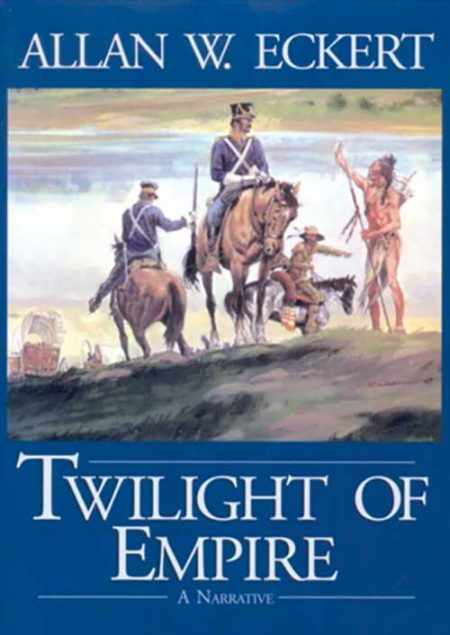 The Winning of America Series: Book 6 of 6 Twilight of Empire, the sixth and final volume in Allan W. Eckert’s highly acclaimed "The Winning of America" series, continues the tale of America’s westward expansion and the trickery, warfare, purchase, theft, and treaty through which it was achieved. Eckert immerses the reader in the history of the Northwest Territories and the Louisiana Purchase during the first half of the nineteenth century as he relates the dramatic events presaging and composing the Black Hawk War of 1832. It is a story with heroes and scoundrels on both sides and is peopled with men whose names have gone down in history. SOFTBACK & HARDBACK By Allan Eckert
The Winning of America Series: Book 6 of 6 Twilight of Empire, the sixth and final volume in Allan W. Eckert’s highly acclaimed "The Winning of America" series, continues the tale of America’s westward expansion and the trickery, warfare, purchase, theft, and treaty through which it was achieved. Eckert immerses the reader in the history of the Northwest Territories and the Louisiana Purchase during the first half of the nineteenth century as he relates the dramatic events presaging and composing the Black Hawk War of 1832. It is a story with heroes and scoundrels on both sides and is peopled with men whose names have gone down in history. SOFTBACK & HARDBACK By Allan Eckert -
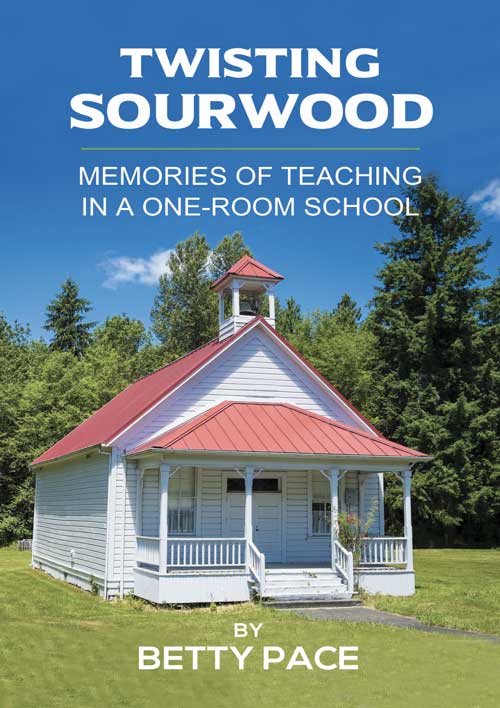 Betty Pace walks readers through a tumultuous year in the life of Fern, an adventurous, trailblazing first-year teacher, who has traveled deep into the hills of Eastern Kentucky in August 1961 to teach twenty-one students in a one room schoolhouse. Before the sun rises, Fern begins her day trudging through the thick terrain and hollers of Twisting Sourwood where she happens upon wild animals, small town secrets and a murder of a young boy and his mother. Fern and two other teachers leave their homes across Kentucky and West Virginia to board with the Sizemore family who teach the young educators how to cook, pack in coal, play Rook and steer clear of feuding families and flooded waters as they navigate their way through reading, arithmetic and writing lessons with their students. While nestled in a schoolhouse deep in the Appalachian mountains, Fern aspires to raise enough money to travel to exciting places that she has read about where she will eat in fancy restaurants that are surrounded by tall building stocked full of sharp dressed businessmen who work in high paying jobs. SOFTBACK VERSION By Betty Pace
Betty Pace walks readers through a tumultuous year in the life of Fern, an adventurous, trailblazing first-year teacher, who has traveled deep into the hills of Eastern Kentucky in August 1961 to teach twenty-one students in a one room schoolhouse. Before the sun rises, Fern begins her day trudging through the thick terrain and hollers of Twisting Sourwood where she happens upon wild animals, small town secrets and a murder of a young boy and his mother. Fern and two other teachers leave their homes across Kentucky and West Virginia to board with the Sizemore family who teach the young educators how to cook, pack in coal, play Rook and steer clear of feuding families and flooded waters as they navigate their way through reading, arithmetic and writing lessons with their students. While nestled in a schoolhouse deep in the Appalachian mountains, Fern aspires to raise enough money to travel to exciting places that she has read about where she will eat in fancy restaurants that are surrounded by tall building stocked full of sharp dressed businessmen who work in high paying jobs. SOFTBACK VERSION By Betty Pace -
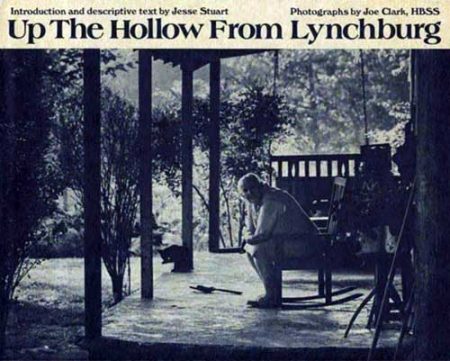 Jesse Stuart and Joe Clark's photographic essay of the town Lynchburg, located where the Blue Grass country meets the Cumberland Mountains of Tennessee. Known for the Jack Daniels distillery, the townspeople are loyal to their employer and to each other. But they are also "close-to-the-land" people who farm, raise livestock, and enjoy diversions which have nothing at all to do with the distillery. For the most part, it is their lives outside of working hours that Clark and Stuart have chosen to reflect. Photographs by Joe Clark Foreword by Jesse Stuart
Jesse Stuart and Joe Clark's photographic essay of the town Lynchburg, located where the Blue Grass country meets the Cumberland Mountains of Tennessee. Known for the Jack Daniels distillery, the townspeople are loyal to their employer and to each other. But they are also "close-to-the-land" people who farm, raise livestock, and enjoy diversions which have nothing at all to do with the distillery. For the most part, it is their lives outside of working hours that Clark and Stuart have chosen to reflect. Photographs by Joe Clark Foreword by Jesse Stuart -
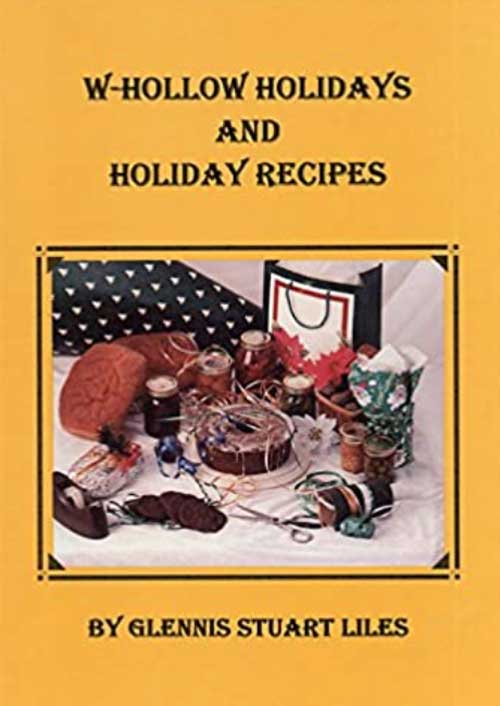 In her Introduction, Glennis Stuart Liles provides some historical background on Greenup and Greenup County and then she focuses on her parents and her family in “W-Hollow Holidays and Holiday Recipes." “My parents, Martha and Mitchell Stuart, married at Plum Grove (Greenup County) and went to house keeping in W-Hollow just over the hill from the town of Greenup. They lived there until they died in the early fifties. They, and their neighbors, grew their vegetables on the rocky hillsides, milked cows, and killed their own meat. Everyone was poor, but they did their best to make holidays special. The most important part of each holiday was the food. It was served in the dining room, on a fancy tablecloth with cloth napkins and their best silverware and china. The recipes in this book are special to the people of W-Hollow. They have been used over and over on special occasions – some for more than one-hundred-fifty years.” HARDBACK VERSION By Glennis Stuart Liles
In her Introduction, Glennis Stuart Liles provides some historical background on Greenup and Greenup County and then she focuses on her parents and her family in “W-Hollow Holidays and Holiday Recipes." “My parents, Martha and Mitchell Stuart, married at Plum Grove (Greenup County) and went to house keeping in W-Hollow just over the hill from the town of Greenup. They lived there until they died in the early fifties. They, and their neighbors, grew their vegetables on the rocky hillsides, milked cows, and killed their own meat. Everyone was poor, but they did their best to make holidays special. The most important part of each holiday was the food. It was served in the dining room, on a fancy tablecloth with cloth napkins and their best silverware and china. The recipes in this book are special to the people of W-Hollow. They have been used over and over on special occasions – some for more than one-hundred-fifty years.” HARDBACK VERSION By Glennis Stuart Liles -
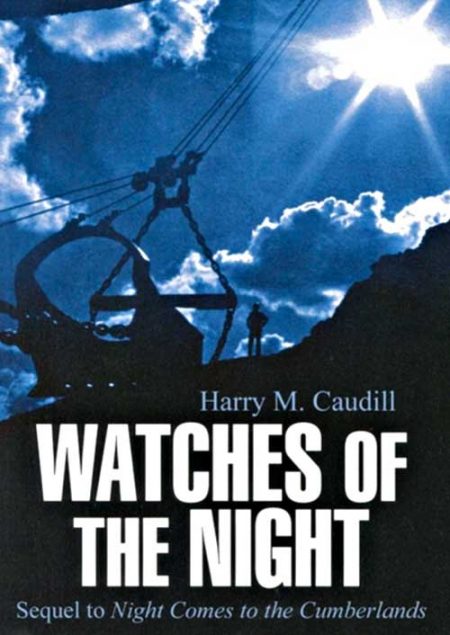 In 1963, Harry M. Caudill published his now classic account of the reckless, deliberate despoliation of the Appalachian Plateau, Night Comes to the Cumberlands. Thirteen years later, in The Watches of the Night, Caudill continued the heartbreaking story of an incredibly rich land inhabited by a grindingly poor people whose problems, despite state and local aid and an unprecedented boom in coal, had worsened: the land was being stripped more rapidly than ever; the people’s traditional relationship with the land was being uprooted, and their old customs eliminated by standardization Both a narrative history and a polemic against greed and waste, The Watches of the Night hammers at “the profligacy growing out of the persistent myth of superabundance.” The author ponders an even darker future if the cycle of boom and bust is not broken. He writes: “Americans have never understood or respected the finely textured, little-hill terrain of the Cumberland Plateau.” Neither the farmers nor the miners who followed the early pioneers saw it as a place cherish. Through decades that have lengthened to nearly two centuries the land has fought back, sometimes with savage floods and always with persistent efforts to reforest. “But now times runs out and our “inexhaustible” resources have turned finite….The Kentucky Cumberlands are many things, but most of all they are a warning.” By Harry M. Caudill
In 1963, Harry M. Caudill published his now classic account of the reckless, deliberate despoliation of the Appalachian Plateau, Night Comes to the Cumberlands. Thirteen years later, in The Watches of the Night, Caudill continued the heartbreaking story of an incredibly rich land inhabited by a grindingly poor people whose problems, despite state and local aid and an unprecedented boom in coal, had worsened: the land was being stripped more rapidly than ever; the people’s traditional relationship with the land was being uprooted, and their old customs eliminated by standardization Both a narrative history and a polemic against greed and waste, The Watches of the Night hammers at “the profligacy growing out of the persistent myth of superabundance.” The author ponders an even darker future if the cycle of boom and bust is not broken. He writes: “Americans have never understood or respected the finely textured, little-hill terrain of the Cumberland Plateau.” Neither the farmers nor the miners who followed the early pioneers saw it as a place cherish. Through decades that have lengthened to nearly two centuries the land has fought back, sometimes with savage floods and always with persistent efforts to reforest. “But now times runs out and our “inexhaustible” resources have turned finite….The Kentucky Cumberlands are many things, but most of all they are a warning.” By Harry M. Caudill -
 "God knew that it would take brave and sturdy people to survive in these beautiful but rugged hills. So He sent us His very strongest men and women." So begins the heartwarming story of Verna Mae and her father, Isom B. ""Kitteneye"" Slone, an extradordinay personal family history set in the hills around Caney Creek in Knott County, Kentucky. SOFTBACK VERSION By Verna Mae Slone
"God knew that it would take brave and sturdy people to survive in these beautiful but rugged hills. So He sent us His very strongest men and women." So begins the heartwarming story of Verna Mae and her father, Isom B. ""Kitteneye"" Slone, an extradordinay personal family history set in the hills around Caney Creek in Knott County, Kentucky. SOFTBACK VERSION By Verna Mae Slone



